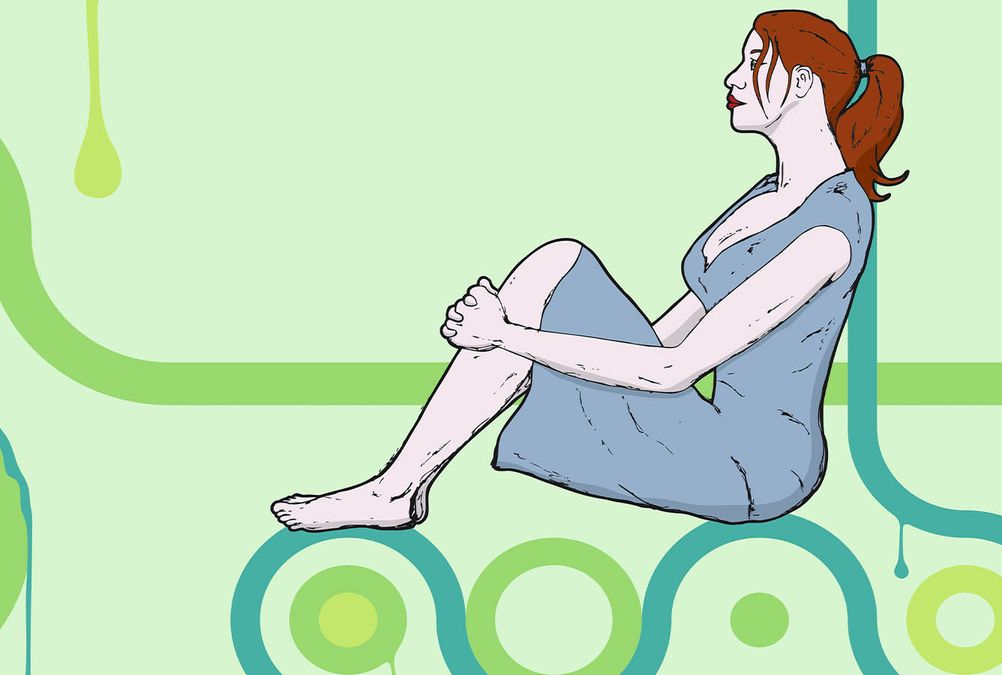
There was no label for Jayne Bigelson’s uncommon behavior. For hours a day, she’d weave elaborate storied daydreams in her thoughts. When she was a baby, she did it whereas strolling in circles and shaking a string. When she acquired older, she discovered the way to do it standing nonetheless.
They had been nice daydreams. She describes them like private screenings of sitcoms during which she performed a starring function. Tales about becoming a member of the "Brady Bunch" on a household trip or hanging out with members of "Basic Hospital." However they’d grow to be all consuming.
"On the finish of the day, it is form of like alcohol. Lots of people can drink wine and assume it is nice. There’s nothing unsuitable with daydreaming on this style, both. However for some folks, it takes over," she says throughout an interview. "With me it was all day, every single day."
The irritating half was that nobody believed her. Her mother and father and therapists informed her there was no such factor as extreme daydreaming, and she or he ought to embrace this "particular expertise."
Finally, Bigelson was prescribed the antidepressant fluvoxamine, a selective serotonin reuptake inhibitor (SSRI) recognized to assist with obsessive compulsive dysfunction (OCD). The immersive daydreams finally stopped and Bigelson moved on.
However 15 years later, the Harvard Regulation College graduate started to surprise once more whether or not anybody else suffered from obsessive daydreaming. That was the early 2000s, and the web was changing into a treasure trove of knowledge. Google finally led her to Eli Somer, Ph.D.’s 2002 paper, "Maladaptive Daydreaming: A Qualitative Inquiry." Lastly, she had validation that her signs had been actual, and proof she wasn’t alone.
What Is Maladaptive Daydreaming?
Daydreaming and even thoughts wandering (a type of off-task fascinated with mundane real-life occasions) is regular, says Somer, an Israeli clinician specializing in trauma and dissociative problems. Immersive daydreaming is completely different. Somer describes it this manner: "intensive absorptive, fantastical, vivid, and fanciful fantasies which are evoked by repetitive bodily motion and by publicity to evocative music."
Immersive daydreaming (ID) "is certainly an distinctive trait that generates very pleasurable emotions and subsequently could develop right into a behavioral habit," Somer says in an e-mail interview. However when it causes important misery or impairment to an individual’s life, then it’s thought-about "maladaptive daydreaming" (MD).
Discovering the Daydreaming Dysfunction
Originally of the millennium, Somer, Professor Emeritus of medical psychology College of Haifa College of Social Work, found one thing fascinating amongst a number of of his sufferers. They spent an uncommon period of time daydreaming and creating intensive fantasy lives of their minds. The coincidence captured his consideration. "I grew to become enthusiastic about their interior worlds."
Somer’s observe had been comprised of trauma survivors and as such, he concluded that that daydreaming was a distraction or soothing exercise sufferers had been utilizing as a "dissociative protection mechanism."
In 2002, he described this commentary and coined the time period "maladaptive daydreaming," within the paper he printed within the Journal of Modern Psychology. On the time, his idea appeared to fall flat with colleagues. With lack of curiosity throughout the scientific neighborhood, Somer deserted the concept and resumed his medical and analysis exercise in trauma and dissociation.
Just a few years later, across the time Bigelson found Somer’s paper, the time period "maladaptive daydreaming" that was non-existent earlier than 2002, had gone viral. Somer started receiving requests to proceed his work on the daydreaming dysfunction.
“”
Analysis on maladaptive daydreaming has come a good distance since Somer first printed his paper in 2002.
Nichola Cartwright/Getty Photos
How Has Analysis Advanced?
When Somer found maladaptive daydreaming in his sufferers, most of whom suffered from trauma, he assumed that the 2 situations had been by some means associated. However within the twenty years since, he says he is aware of that is not essentially the case.
"Our analysis, certainly, reveals that there’s a statistical relationship between trauma historical past and MD. Nevertheless, trauma is just not a essential situation. People with ID can grow to be hooked on this extremely rewarding psychological expertise within the absence of a trauma historical past," he says.
A part of his understanding was influenced by Bigelson, who in 2008, satisfied her psychiatrist to put in writing an MD case research on her immersive daydreaming expertise. She later spearheaded analysis to scan the brains of 90 extreme daydreamers. The scans gave much more validation that immersive daydreaming was actual. They revealed that the mind’s reward heart lit up throughout moments of immersive daydreaming "very like it does within the brains of heroin addicts after they see photos of medication," Bigelson says.
Bigelson additionally collaborated with Somer on analysis and wrote about her dysfunction in 2015 for The Atlantic to assist increase consciousness and let others with MD know they aren’t alone.
Is Maladaptive Daydreaming a Psychological Dysfunction?
Researchers who’ve extensively studied maladaptive daydreaming imagine there may be "ample scientific proof that MD is a dependable psychological situation that can not be defined by any present psychiatric situation," Somer says.
However as a result of the assemble of maladaptive dysfunction continues to be considerably new, it isn’t listed within the Diagnostic and Statistical Handbook of Psychological Problems, fifth Version, additionally known as the DSM-5. The handbook, printed by the American Psychiatric Affiliation, gives info or tips for assessing, analysis and treating psychological problems.
Neither is it among the many Worldwide Statistical Classification of Illnesses and Associated Well being Issues (ICD), the worldwide commonplace for well being information, medical documentation and statistical aggregation.
What Are the Signs of Maladaptive Daydreaming?
In response to Somer, people who meet diagnostic standards A, B and C might be categorized as having a "daydreaming dysfunction," or "maladaptive daydreaming:"
A. Persistent and recurrent fantasy exercise that’s vivid and fanciful as indicated by the person exhibiting two (or extra) of the next in a six-month interval. No less than one among these ought to embody criterion (1):
- Whereas daydreaming, experiences an intense sense of absorption/immersion that features visible, auditory or affective properties.
- Daydreaming is triggered, maintained, or enhanced with publicity to music.
- Daydreaming is triggered, maintained, or enhanced with publicity to stereotypical motion (e.g., pacing, rocking, hand actions).
- Usually daydreams when feels distressed, or bored.
- Daydreaming depth and size intensify within the absence of others (e.g., daydreams extra when alone).
- Is aggravated when unable to daydream or when daydreaming is interrupted or curbed.
- Would reasonably daydream than have interaction in every day chores, social, educational or skilled actions.
- Has made repeated unsuccessful efforts to regulate, in the reduction of or cease daydreaming.
B. The disturbance causes clinically important misery or impairment in social, occupational, or different vital areas of functioning.
C. The disturbance is just not as a result of direct physiological results of a substance or a normal medical situation and isn’t higher defined by one other dysfunction.
Whereas not a diagnosing criterion, maladaptive dysfunction additionally appears extra prevalent in folks with sure psychological well being situations similar to consideration deficit hyperactivity dysfunction (ADHD), OCD spectrum problems, autism spectrum dysfunction and social nervousness.
How Is Maladaptive Daydreaming Handled?
You will need to be aware that excessive and immersive daydreaming, in kids or adults, could not should be handled, particularly if it is not interfering within the daydreamer’s life or inflicting them misery.
For many who need to higher management their fantasy life, Somer recommends:
- Looking for assist from a psychological well being skilled specialised in treating habits and behavioral addictions.
- Protecting a every day diary of your MD may give you higher consciousness of your daydreaming and will result in higher management and discount.
- Meditating or aware coaching could assist present the required ability for staying current in exterior actuality.
Daydreamers also can discover assist by means of on-line assist teams, Fb communities and boards similar to Daydream in Blue and Wild Minds Community.
Bigelson’s case research additionally recognized fluvoxamine as a doable pharmaceutical choice. However as a result of MD is just not thought-about a psychological dysfunction, there aren’t any drugs particularly for extreme daydreaming.
Now That is Attention-grabbing
Movie scholar Thomas Willem Renckens got here throughout "maladaptive daydreaming" whereas researching fantasy habit for his commencement movie. Within the course of, "I will need to have spoken to over 100 completely different folks, which actually allowed me to get a great grasp on what it’s precisely and the way it can have an effect on folks’s lives," he says. His movie, "The Daydreamers," was launched on public tv in his dwelling nation the Netherlands and has been chosen for a number of movie festivals. The movie is just not but accessible on-line, however the trailer — with testimonials from maladaptive daydreamers and feedback from Dr. Somer — may be seen right here.






















